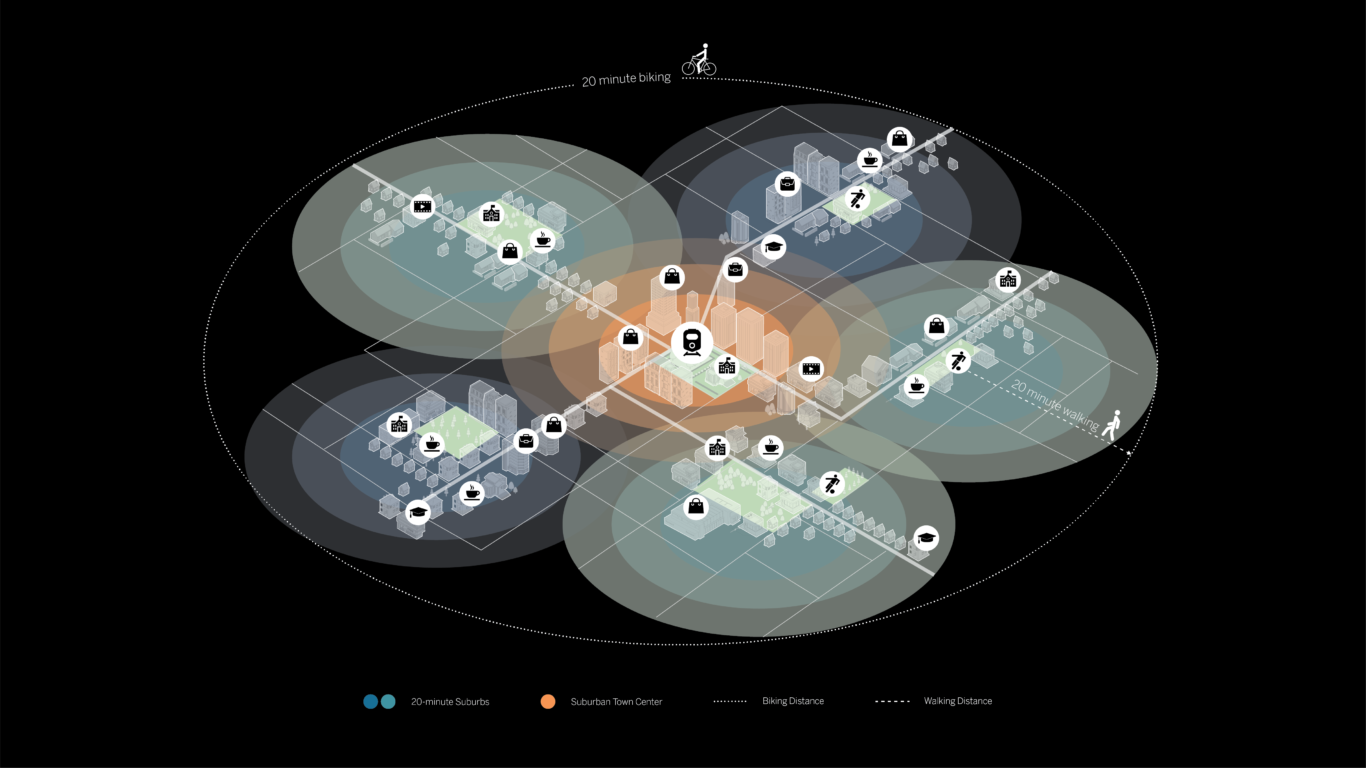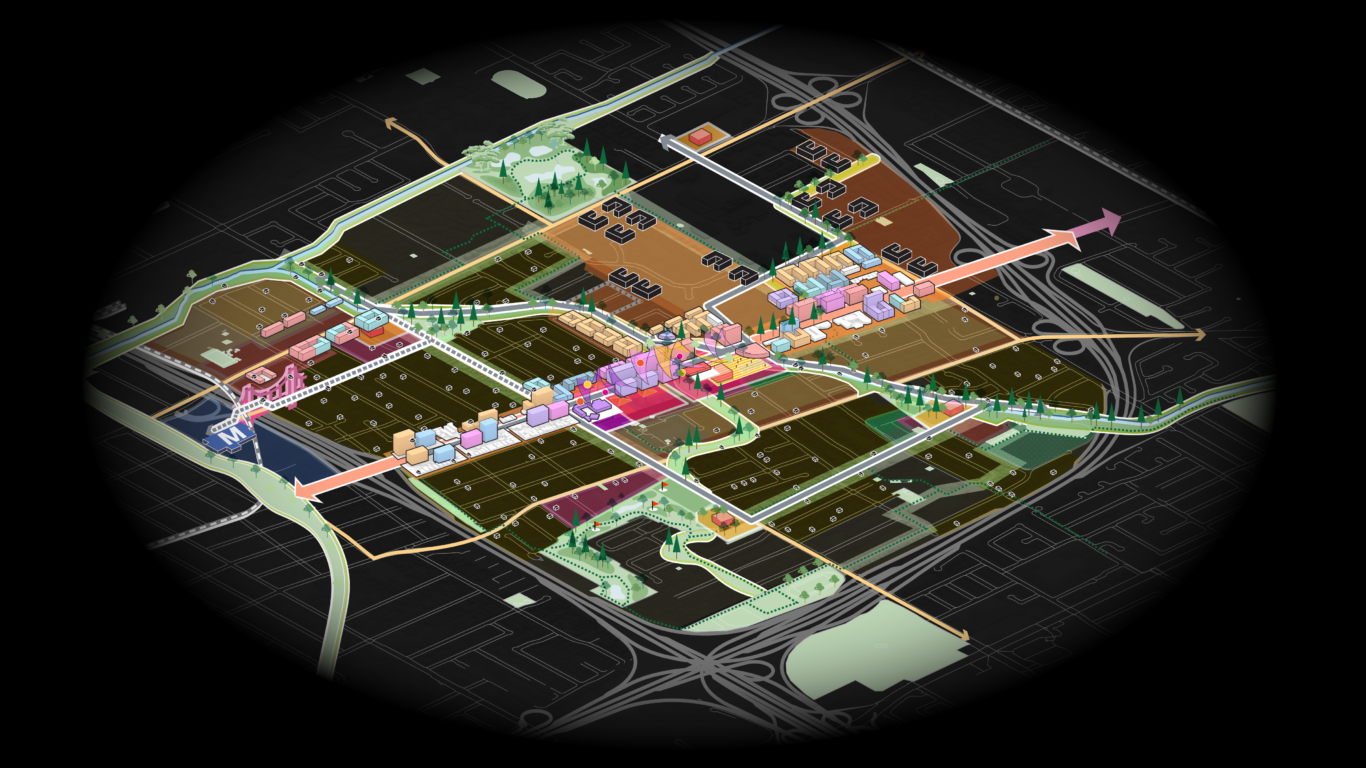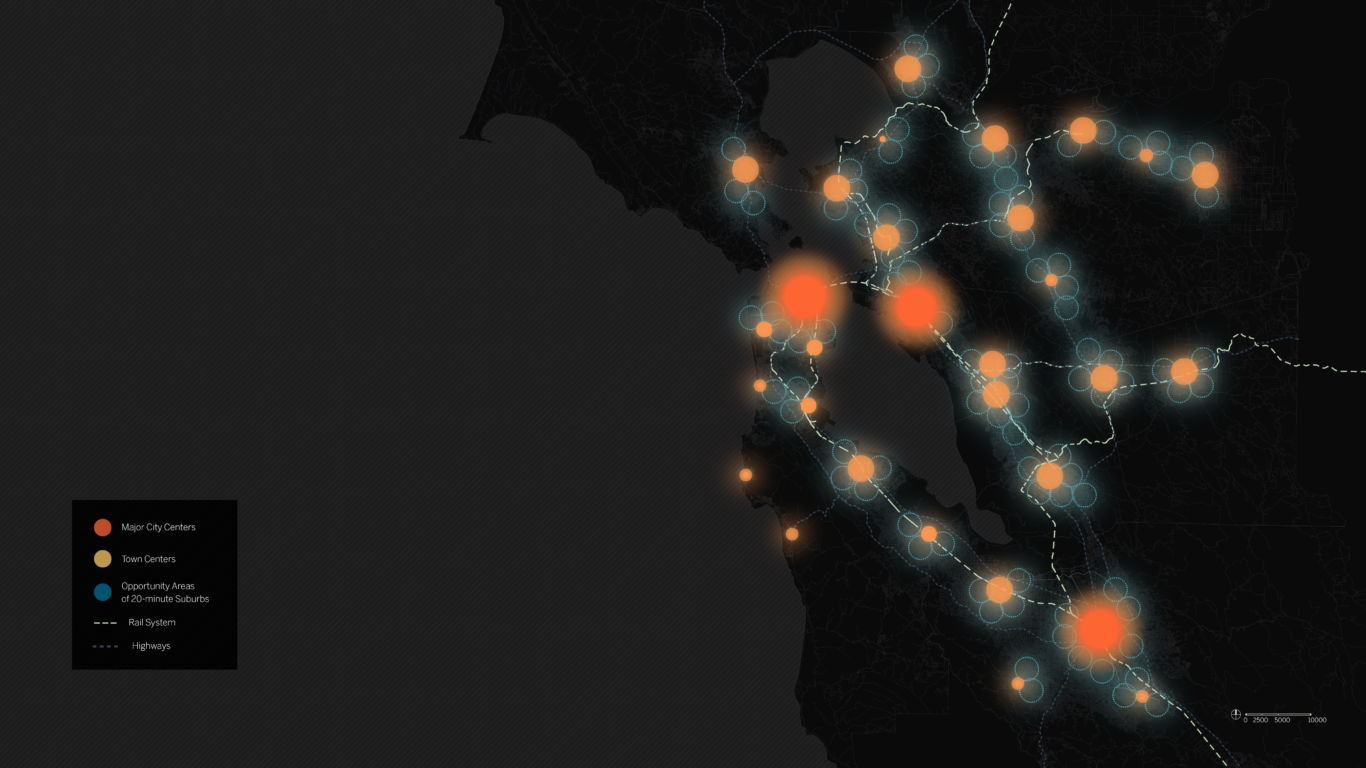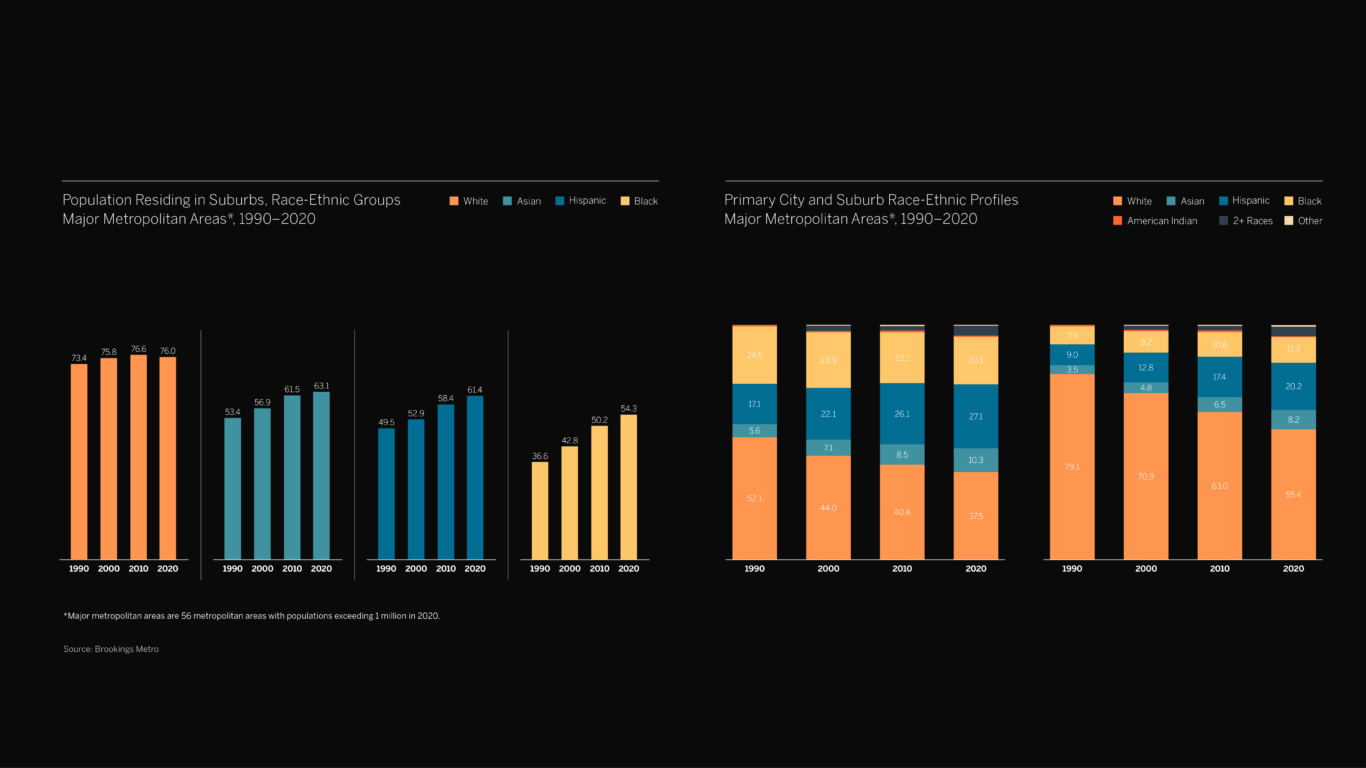For decades, the distinctive built fabric of American suburbs has largely depended on car travel and single-use zoning. In the process, this pattern of development has increased sprawl, exacerbated our carbon footprint, and heightened segregation within communities. As the global COVID-19 pandemic continues to shape migration patterns, suburbs face new pressures and demands from their changing populations.
At the onset of the COVID-19 pandemic in 2020, our urban design and planning teams started noticing something distinct about where people were moving and why. As young professionals began to move out of cities and into suburbs in search of space, affordability and access to the outdoors, suburbs became more active. “You could start to see the clues,” says Principal Ellen Lou. “What programs, and what changes, can make these suburbs work like this all the time?”

Taking a holistic view of these issues, our team posits a planning model that we have termed the “20-minute suburb.” Through careful and strategic interventions, we believe that existing suburban communities can be transformed to become places where residents can meet all of their daily needs within a 20-minute walk. This is a radical reinvention of a suburban planning model that has historically marginalized low-income communities and people of color – instead, we envision the 20-minute suburb as a framework for reconnecting communities and expanding economic and social mobility.
In order to re-envision our suburbs as more affordable, interconnected, accessible, and equitable places to live, this framework provides:
- A brief history of the development of American suburbs and the lasting impact of this legacy
- Emerging demographic trends within suburban populations, particularly through the lens of the pandemic
- Ongoing reform and policy measures that enable better design and planning decisions
- Site-specific design interventions to guide suburban municipalities across three typologies: mixed-income residential suburbs, suburban periphery/underserved communities, and local town centers




Transforming American suburbs is a long-range effort that will require consensus-building and participation from many stakeholders; we have created this report as a resource for planners, policymakers, elected officials, and community leaders. We hope you find the 20-minute suburb a useful framework to begin thinking about how to improve amenity, density, and connectivity within your community.




